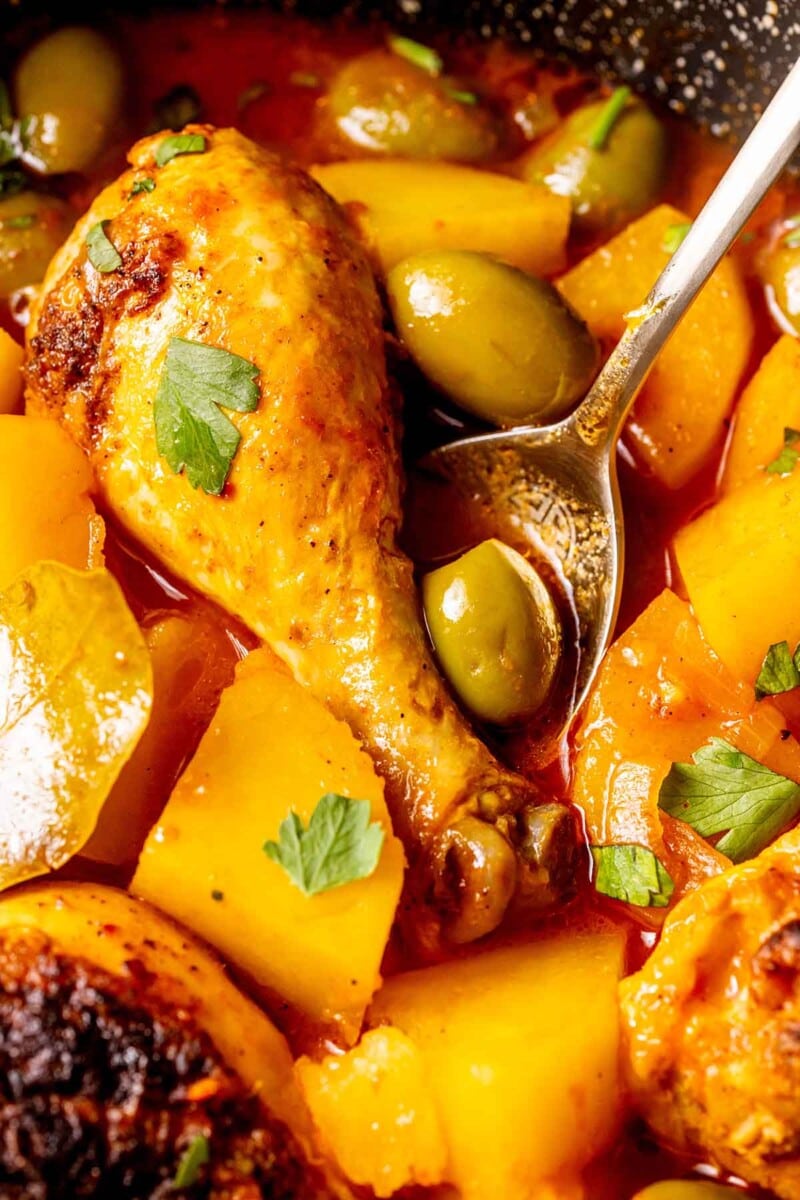Bring Puerto Rican cuisine straight to your kitchen with this pollo guisado recipe. Similar to a classic chicken stew, it’s an incredibly simple dish that’s impressive, comforting, and bursting with Latin American flavor!
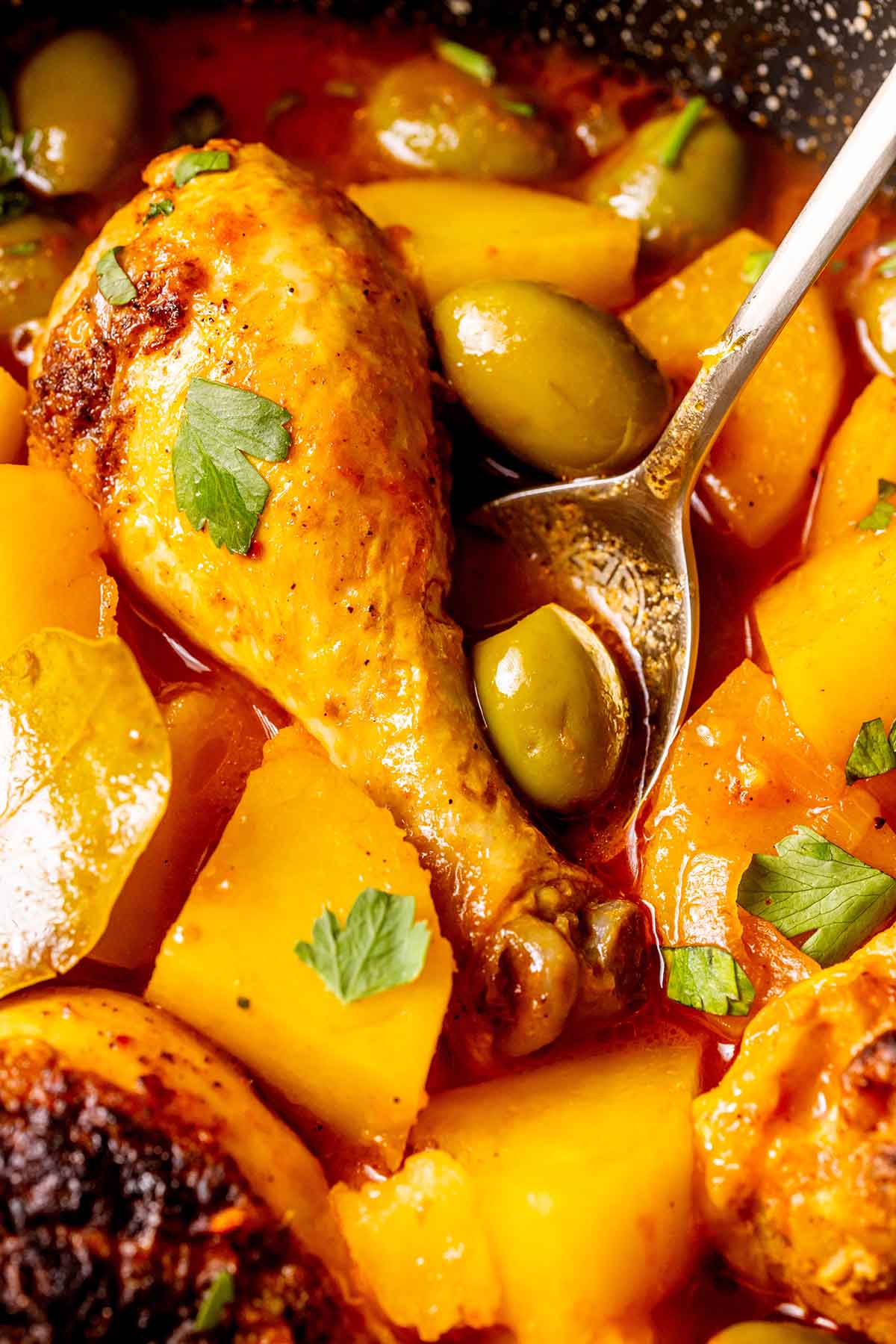
Our family is big on filling and flavorful dishes, which just happen to be two of Latin America’s specialties. So, it’s no wonder why this one-pot Puerto Rican chicken stew is one of our favorites! Featuring juicy chicken simmered in broth incredible spices and vegetables, it’s an exciting and vibrant meal that’s always an instant hit.
What is pollo guisado?
Pollo guisado, or stewed chicken, is a Latin American dish most popular in Puerto Rico and the Caribbean. There are different variations of the recipe depending if you’re in Puerto Rico, the Dominican, Mexico, etc. but at the heart of it is succulent chicken (typically thighs and drumsticks) simmered with aromatics and veggies to create a rich, savory stew broth.
It’s become a dinnertime staple for us, especially in the cooler months, and you’ll love it too, because:
- An easy one-pot comfort food. I love the convenience of cooking all of the ingredients in one pot. It saves me from having to wash a mountain of dishes while giving my family a restaurant-quality meal!
- Fun to customize. Just like my chicken adobo, this meal is versatile and can be tailored to please even the picky eaters in your household.
- Incredible flavors and textures. The texture of the chicken is what you’d expect from anything slow cooked- moist, juicy, and falling off the bones. It’s a flavor explosion with hints of hot spice, smokiness, and everything in between.
Ingredients needed
You’ll notice the ingredient list includes a few spice mixes which not only saves time but also makes things more convenient. Besides that and some chicken, there isn’t much else needed to make. Here is what you’ll need:
- Chicken. I highly recommend sticking with skin-on, bone-in chicken thighs and drumsticks. These cuts are better suited for stewing compared to breasts and tenderloin.
- Adobo seasoning. This spice blend is a staple in our kitchen. It’s typically a mix of garlic powder, onion powder, paprika, oregano, cumin, salt, and black pepper.
- Sazon seasoning. This bold, peppery blend is often made with ground annatto seeds, cumin, garlic powder, coriander, oregano, and salt. You can buy this at any mainstream grocery store or easily make your own (see my tips and variations section).
- Olive oil. Just enough to sear the chicken and saute the aromatics.
- Aromatics. The stew starts with a sofrito made from onion, garlic, and chili peppers. They give every bite an incredible taste and depth of flavor. Feel free to use bell peppers if red chili peppers are too spicy.
- Green olives. They add bursts of briny, salty, and slightly tangy flavors. Just be sure to get ones without the seeds.
- Potatoes. I recommend using a waxy variety, like red, yellow, or Yukon Gold potatoes. These varieties hold their shape and become creamy and soft when cooked.
- Tomato sauce. It helps create a thick, flavorful stew sauce.
- Chicken stock. Chicken broth keeps the chicken moist and tender as they simmer.
- Bay leaves. For a subtle earthy element. Don’t forget to remove them from the stew before serving!
Find the printable recipe with measurements below
How to make pollo guisado
As mentioned, this easy chicken stew comes together in no time in just one pot! It’s a mostly hands-off process, but don’t leave it alone for too long or else the chicken and potatoes can overcook.
Step 1- Sear the chicken. Season the chicken with the seasonings, then sear it in an oiled skillet over medium-high heat until browned. Transfer it to a plate.
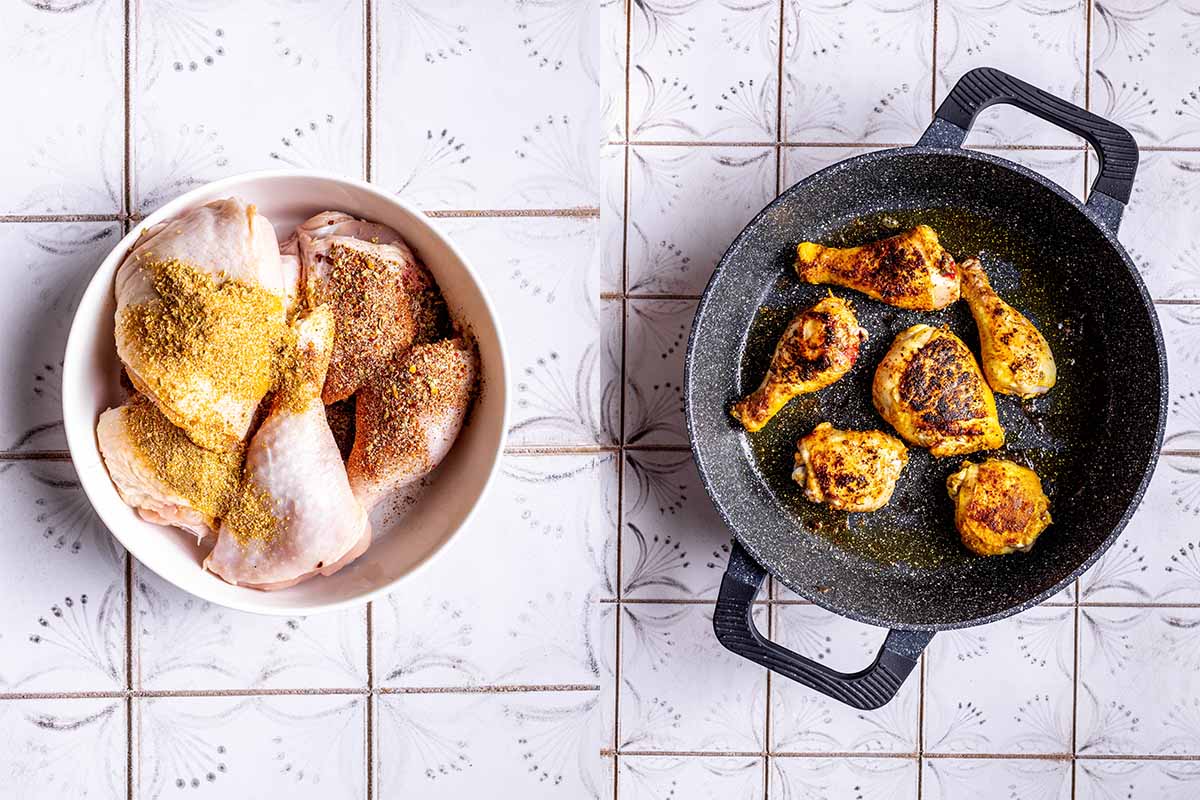
Step 2- Saute the aromatics. Cook the onion and chili pepper in the now-empty skillet. Next, add the garlic.
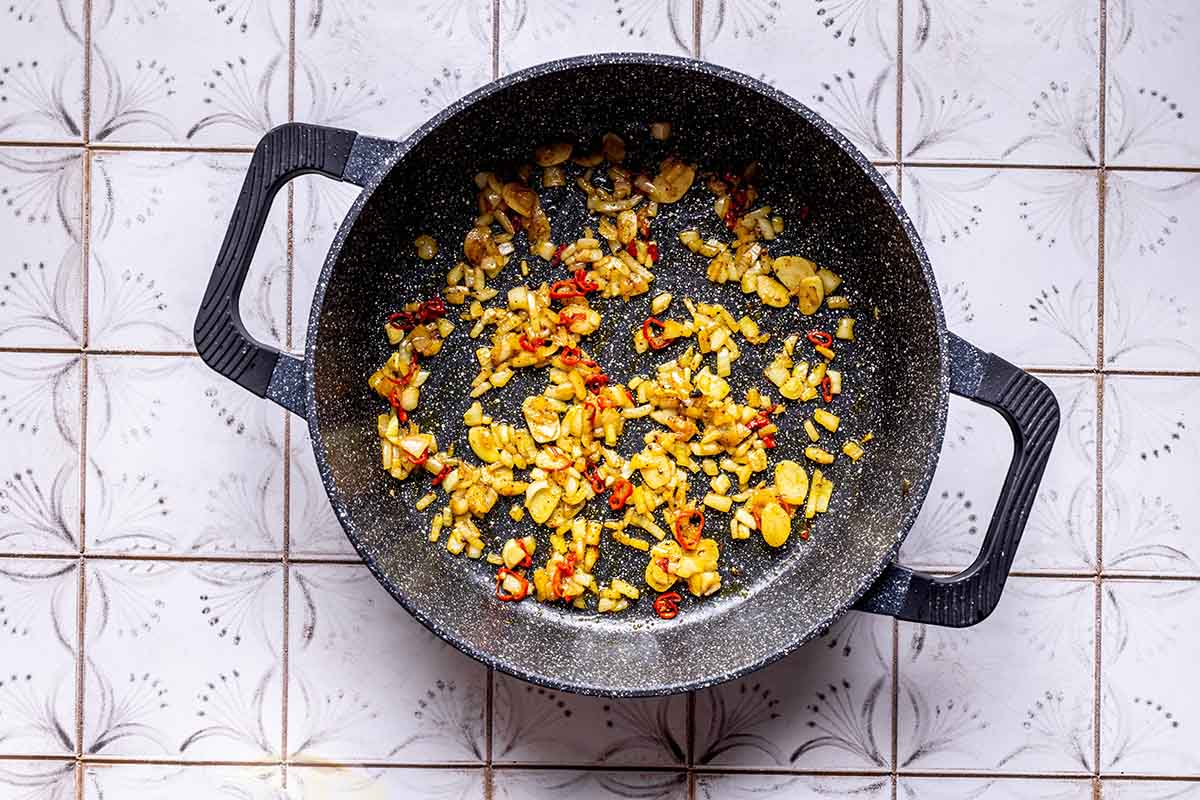
Step 3- Let it simmer. Place the chicken back in the skillet. Stir the rest of the ingredients into the chicken and veggie mixture, then bring it to a boil. Cover with a lid, reduce the heat, and let the stew simmer until the chicken and potatoes are tender.
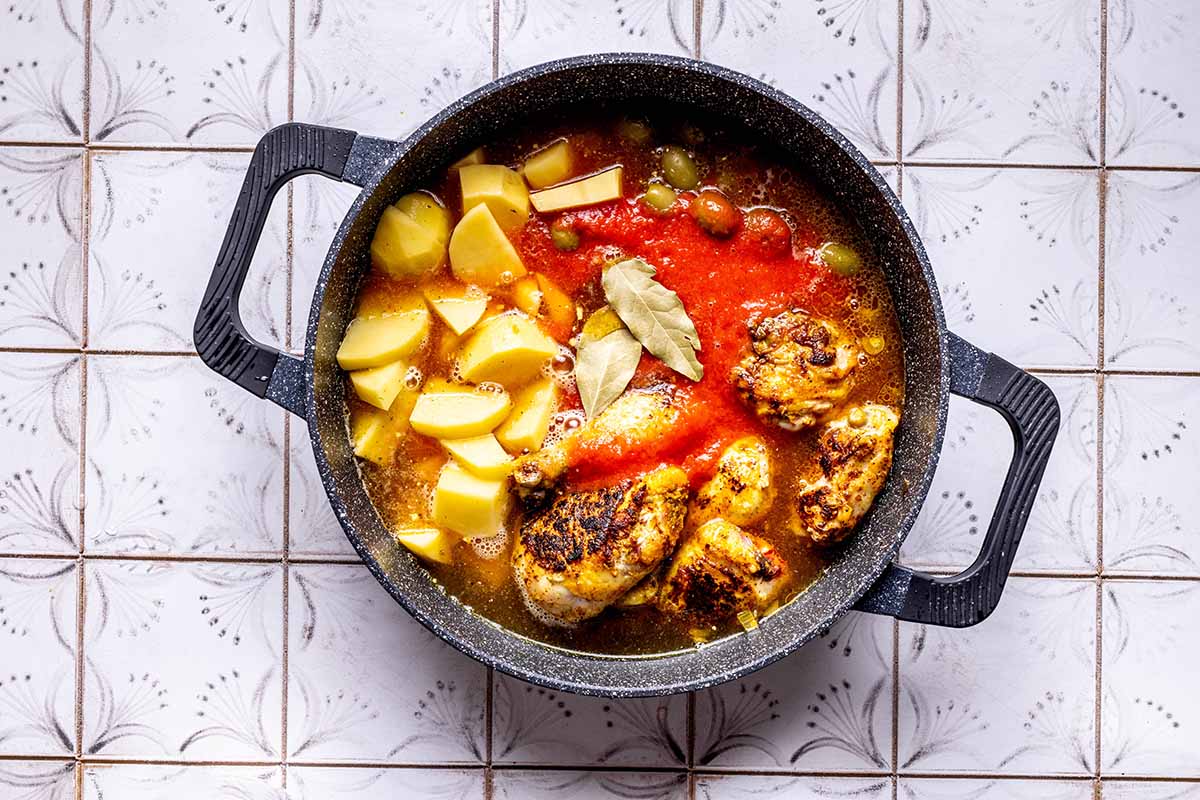
Step 4- Garnish and serve. Sprinkle chopped parsley or cilantro over the top, then scoop the stew into bowls with white rice. Enjoy!
Recipe tips and variations
- Don’t skip the sear! In testing, I’ve found this step to be the key to giving the chicken amazing flavors and a crispy texture.
- Low and slow is the way to go. Give the stew a good 30 minutes to simmer on the stove and you’ll eventually notice how it’s falling off the bone. Be patient – I promise it’s worth it!
- Use other protein. Try swapping the chicken (pollo) for beef to make “carne guisada,” pork for “cerdo guisado,” or lamb for “cordero guisado.”
- Crank up the heat. I found that a little extra spice is more than welcome in this flavor-rich meal. You can add a pinch of cayenne or red pepper flakes or a dash of hot sauce. Also, consider using a super spicy chili pepper, like cayenne, habanero, or serrano.
Storage instructions
To store: Let the leftover stew cool to room temperature before transferring it to an airtight container. Store in the refrigerator for 3 to 4 days.
To freeze: Once it’s cool, transfer the stew to a freezer-safe container and freeze for 2 to 3 months. Let it thaw overnight in the fridge before reheating.
To reheat: Reheat the leftover chicken guisado in a saucepan on the stove over low to medium heat until heated through. Add a splash of stock or water if it needs to be thinned out a bit.
More easy one-pot family dinners
- Carne Picada
- Albondigas soup
- White Chicken Chili
- Chicken Florentine
Frequently asked questions
Is pollo guisado spicy?
It depends. The red chili pepper and seasoning blends are the main sources of heat in the stew, and I find that they balance the rest of the flavors perfectly. The heat level is mild as-is, but you can easily adjust the amount of chili peppers and spices to make it less or more spicy.
Can you make this with boneless chicken?
Sure! Boneless chicken, like chicken breasts, is fine if that’s all you have at home. Just keep in mind that boneless chicken pieces cook faster than bone-in cuts, so don’t let the stew simmer unattended for too long.
